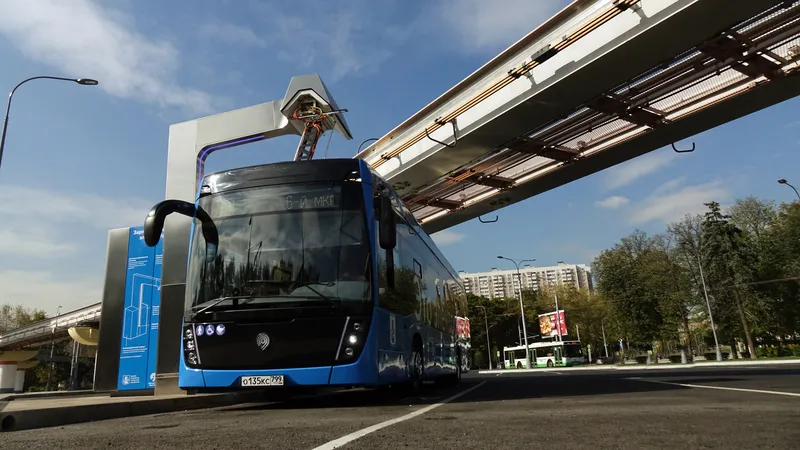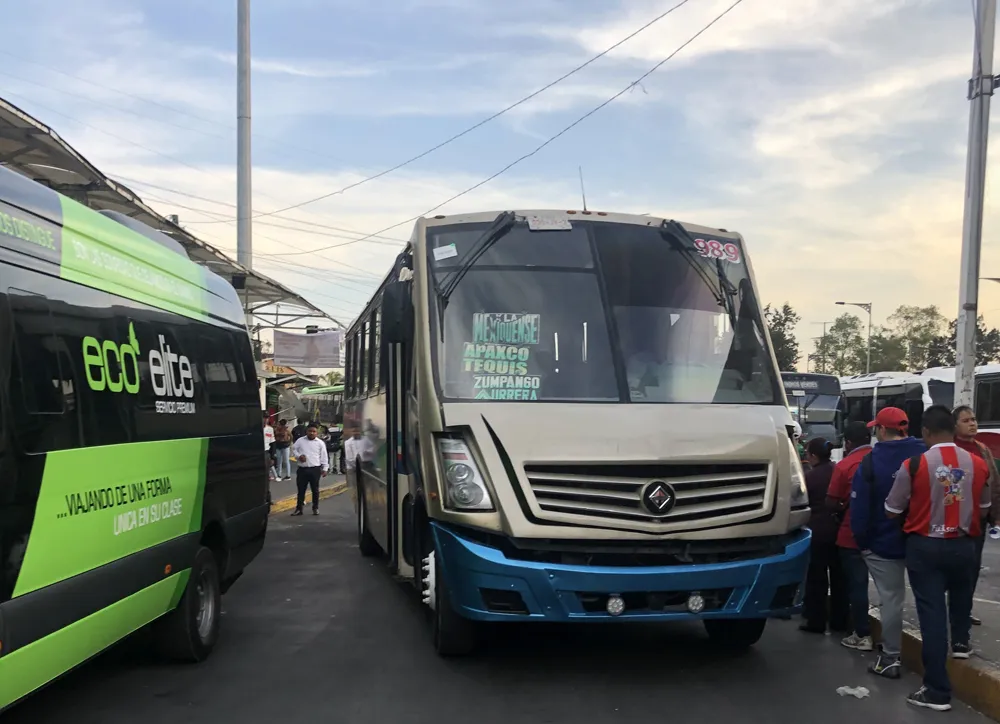In an initiative to enable the quieter, cleaner future of public transport in Milton Keynes, UK, eight organisations led by a subsidiary of Mitsui Europe ("Mitsui") have agreed a five-year collaboration committing to the replacement of diesel buses with their all-electric counterparts on one of the main bus routes in the city by summer 2013. The trial, which could reduce bus running costs by between US$19,500 and US$23,000 per year, is a partnership between Mitsui subsidiary eFleet Integrated Service, Milto
September 26, 2012
Read time: 4 mins
In an initiative to enable the quieter, cleaner future of public transport in Milton Keynes, UK, eight organisations led by a subsidiary of 6615 Mitsui Europe ("Mitsui") have agreed a five-year collaboration committing to the replacement of diesel buses with their all-electric counterparts on one of the main bus routes in the city by summer 2013.
The trial, which could reduce bus running costs by between US$19,500 and US$23,000 per year, is a partnership between Mitsui subsidiary eFleet Integrated Service, Milton Keynes Council, bus operator476 Arriva, manufacturer 6616 Wrightbus, technology supplier 6617 Conductix-Wampfler, 6618 Western Power Distribution, 6619 Chargemaster and SSE.
The number 7 route in Milton Keynes will replace its diesel buses with eight electric buses that will run seven days a week; removing approximately 500 tonnes of tailpipe CO2 emissions per year as well as 45 tonnes of other noxious tailpipe emissions. The route currently transports over 775,000 passengers a year over a total of 450,000 miles. The new buses will be able to recharge their batteries wirelessly through the day, which means that for the first time, electric buses will be capable of the equivalent load of a diesel bus.
The buses will charge when power transmitted from a primary coil buried in the road is picked up by a secondary coil on the bus. 10 minutes parked over a coil will replenish two thirds of the energy consumed by the bus's route. The primary coils will be placed at three points on the bus route, and the buses will charge in the time scheduled for driver breaks at the end of the route.
The trial was planned and will be managed by Mitsui-Arup joint venture MBK Arup Sustainable Projects (MASP), whose ultimate aim is use the data collected by the Milton Keynes trial to demonstrate the economic viability of low-carbon public transport. This data could be used to kick-start electric bus projects in other towns and cities worldwide.
John Miles, who initiated the trial from Arup, says: "What makes the Milton Keynes project different to other electric bus schemes is the wireless charging system. The Milton Keynes buses will be able to cover a heavily-used urban route because they are able to charge for 10 minutes at the beginning and end of each cycle without interrupting the timetable. This means that for the first time, an electric bus will effectively be able to do everything a diesel bus can do, which is a significant step forwards to a cleaner, quieter, public transport system."
Noriaki Sakamoto, Managing Director, Mitsui Europe, commented: "Since the withdrawal of the subsidy for diesel buses, we can see that the cost of diesel bus operations will rise significantly. This, coupled with the anticipated reduction in the cost of batteries and electric drive systems for buses, as well as the introduction of wirelessly charging during the day now means that the electric bus is now a real contender in the future of public transport. Innovation and trials are urgently needed to find a new way forward and Mitsui, as a business enabler, is happy to back this innovative initiative because we can see the long-term benefit for the community as well as for Mitsui."
Councillor John Bint, Cabinet Member responsible for transport at Milton Keynes Council, says: "We are delighted to be leading the way with this innovative public transport trial. Milton Keynes led the way with the installation of electric car charge points, and we're now showing the world how electric buses are a real alternative to the traditional diesel buses. Passengers on the number 7 route can be proud to be using one of the greenest ways to travel."
The trial, which could reduce bus running costs by between US$19,500 and US$23,000 per year, is a partnership between Mitsui subsidiary eFleet Integrated Service, Milton Keynes Council, bus operator
The number 7 route in Milton Keynes will replace its diesel buses with eight electric buses that will run seven days a week; removing approximately 500 tonnes of tailpipe CO2 emissions per year as well as 45 tonnes of other noxious tailpipe emissions. The route currently transports over 775,000 passengers a year over a total of 450,000 miles. The new buses will be able to recharge their batteries wirelessly through the day, which means that for the first time, electric buses will be capable of the equivalent load of a diesel bus.
The buses will charge when power transmitted from a primary coil buried in the road is picked up by a secondary coil on the bus. 10 minutes parked over a coil will replenish two thirds of the energy consumed by the bus's route. The primary coils will be placed at three points on the bus route, and the buses will charge in the time scheduled for driver breaks at the end of the route.
The trial was planned and will be managed by Mitsui-Arup joint venture MBK Arup Sustainable Projects (MASP), whose ultimate aim is use the data collected by the Milton Keynes trial to demonstrate the economic viability of low-carbon public transport. This data could be used to kick-start electric bus projects in other towns and cities worldwide.
John Miles, who initiated the trial from Arup, says: "What makes the Milton Keynes project different to other electric bus schemes is the wireless charging system. The Milton Keynes buses will be able to cover a heavily-used urban route because they are able to charge for 10 minutes at the beginning and end of each cycle without interrupting the timetable. This means that for the first time, an electric bus will effectively be able to do everything a diesel bus can do, which is a significant step forwards to a cleaner, quieter, public transport system."
Noriaki Sakamoto, Managing Director, Mitsui Europe, commented: "Since the withdrawal of the subsidy for diesel buses, we can see that the cost of diesel bus operations will rise significantly. This, coupled with the anticipated reduction in the cost of batteries and electric drive systems for buses, as well as the introduction of wirelessly charging during the day now means that the electric bus is now a real contender in the future of public transport. Innovation and trials are urgently needed to find a new way forward and Mitsui, as a business enabler, is happy to back this innovative initiative because we can see the long-term benefit for the community as well as for Mitsui."
Councillor John Bint, Cabinet Member responsible for transport at Milton Keynes Council, says: "We are delighted to be leading the way with this innovative public transport trial. Milton Keynes led the way with the installation of electric car charge points, and we're now showing the world how electric buses are a real alternative to the traditional diesel buses. Passengers on the number 7 route can be proud to be using one of the greenest ways to travel."










